VHO - The People's Committee of Quang Nam province has just issued a document No. 6949/UBND-KGVX respectfully requesting the Ministry of Culture, Sports and Tourism to consider and submit to the Prime Minister for recognition as national treasures the artifacts in the collection of gold jewelry and animal-shaped agate artifacts in the Lai Nghi burial site currently kept at the Quang Nam Museum's artifact warehouse.
These are artifacts discovered during the archaeological excavation at Lai Nghi burial site (Dien Ban town, Quang Nam province). The site was discovered in 2000 and excavated by Quang Nam Museum in collaboration with archaeologists from the University of Social Sciences and Humanities under the Vietnam National University, Hanoi , and the Institute of General and Comparative Archaeology under the German National Institute of Archaeology from 2002 to 2004.
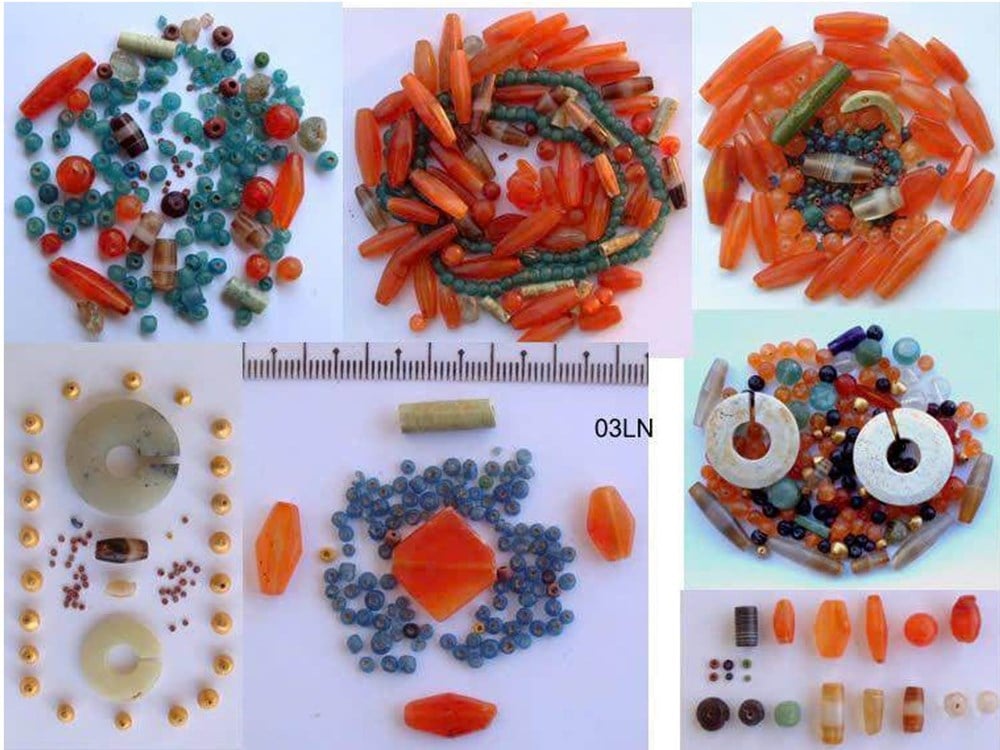
According to Quang Nam Museum, the reason for the selection is because these are original, unique artifacts, discovered directly at the Lai Nghi burial site through archaeological excavations, have intact cultural layers and have been analyzed for age by many methods.
Unique and typical artifacts with authentic dates, clear origins and sources through archaeological excavations, historical and cultural values, meeting the criteria to be recognized as national treasures.
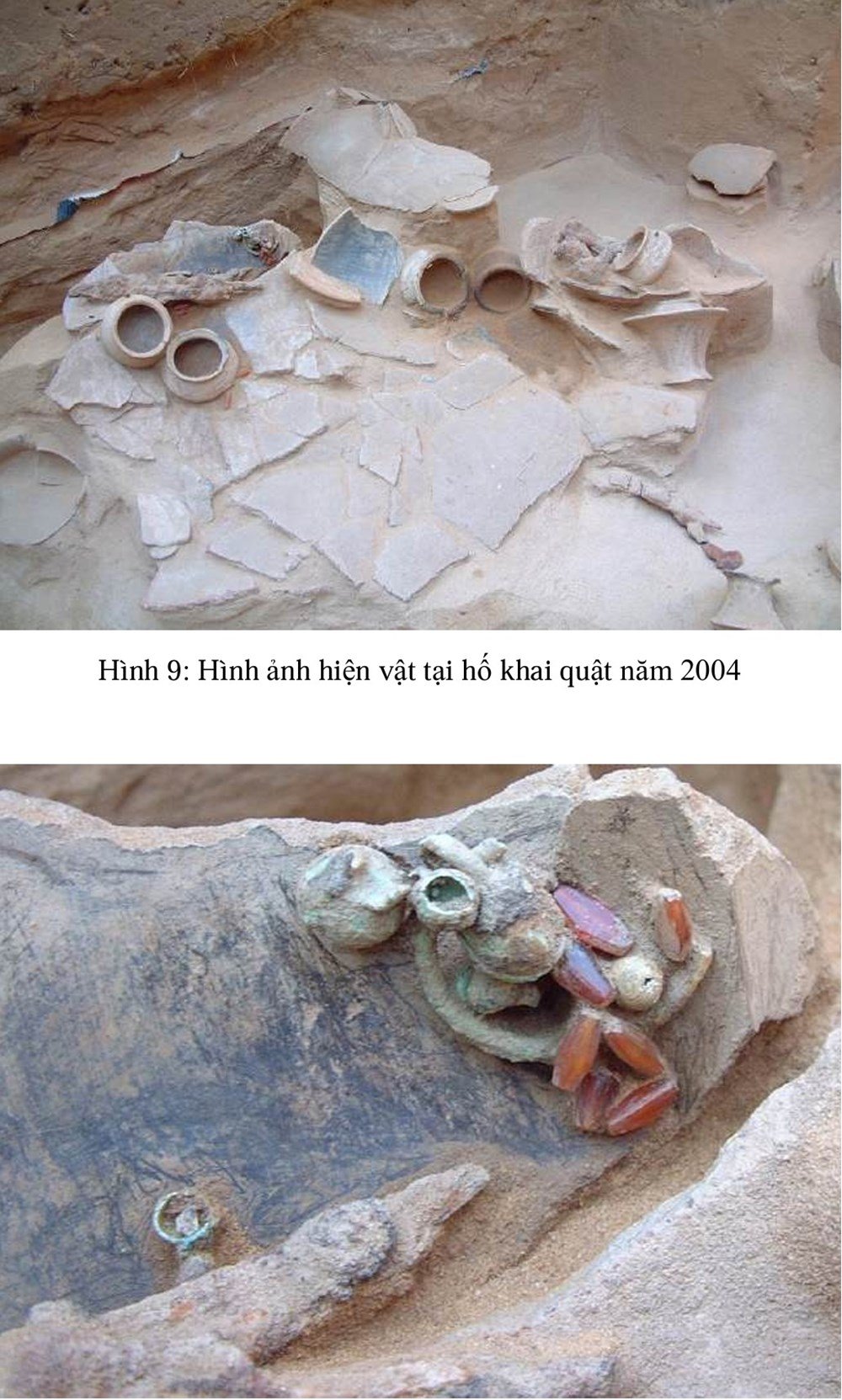
Lai Nghi burial site is an archaeological site with rich and diverse burial objects. The rate of artifacts buried in each jar of Lai Nghi is the highest among the discovered and excavated sites of Sa Huynh culture in Vietnam.
With the origin of artifacts found during archaeological excavations, at the original location, right in the cultural layer, these artifacts contain important scientific information, of great value for research and awareness of cultural and historical issues related to Lai Nghi relics and Sa Huynh culture. This is a rare artifact in Sa Huynh culture in particular and ancient civilizations in the world in general.
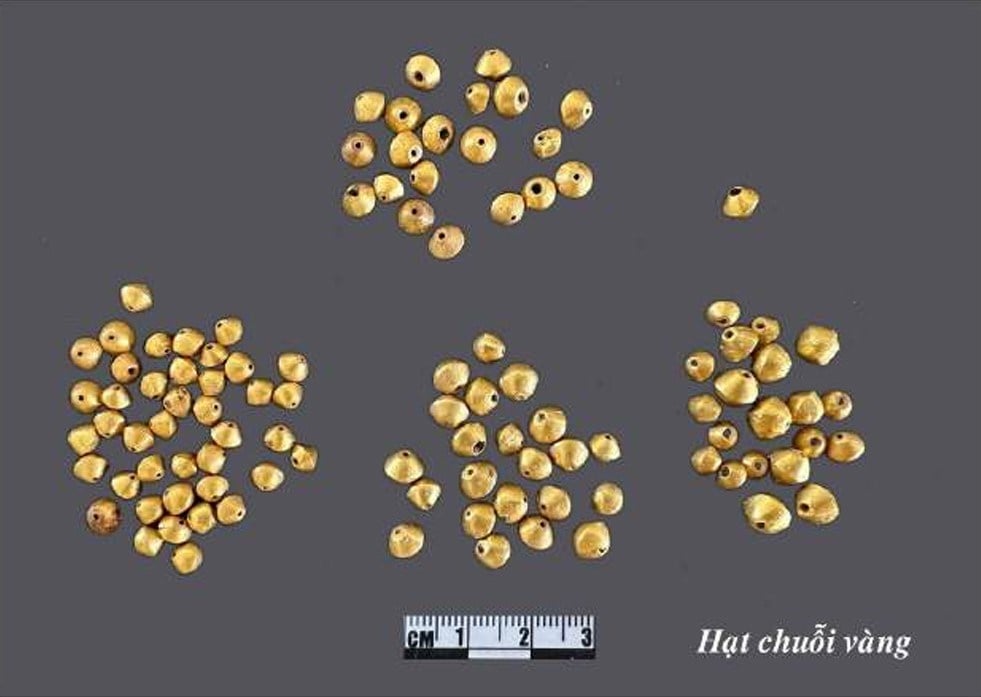
Accordingly, the proposed artifacts for recognition are as follows: First, the collection of Sa Huynh culture gold jewelry in Lai Nghi burial site (referred to as the gold jewelry collection) includes 108 intact artifacts, dating from the 3rd century BC to the mid-1st century AD, divided into 2 groups.
The set of earrings includes 4 gold earrings, round cross-section, with spiral thread all over the body, with a gap in the body. The set of beads includes 104 gold beads shaped like two truncated cones facing each other, the middle of the body is connected to form a ridge, the two ends are flat and have holes running through the body.
The set of 4 gold earrings are all made from gold thread/wire, and are quite similar in appearance in shape and size. However, when observed and studied carefully, it can be seen that 3 earrings have more prominent ridges than the other; the 4th earring has fewer ridges, and on some of the ridges there are signs of “engraving”.
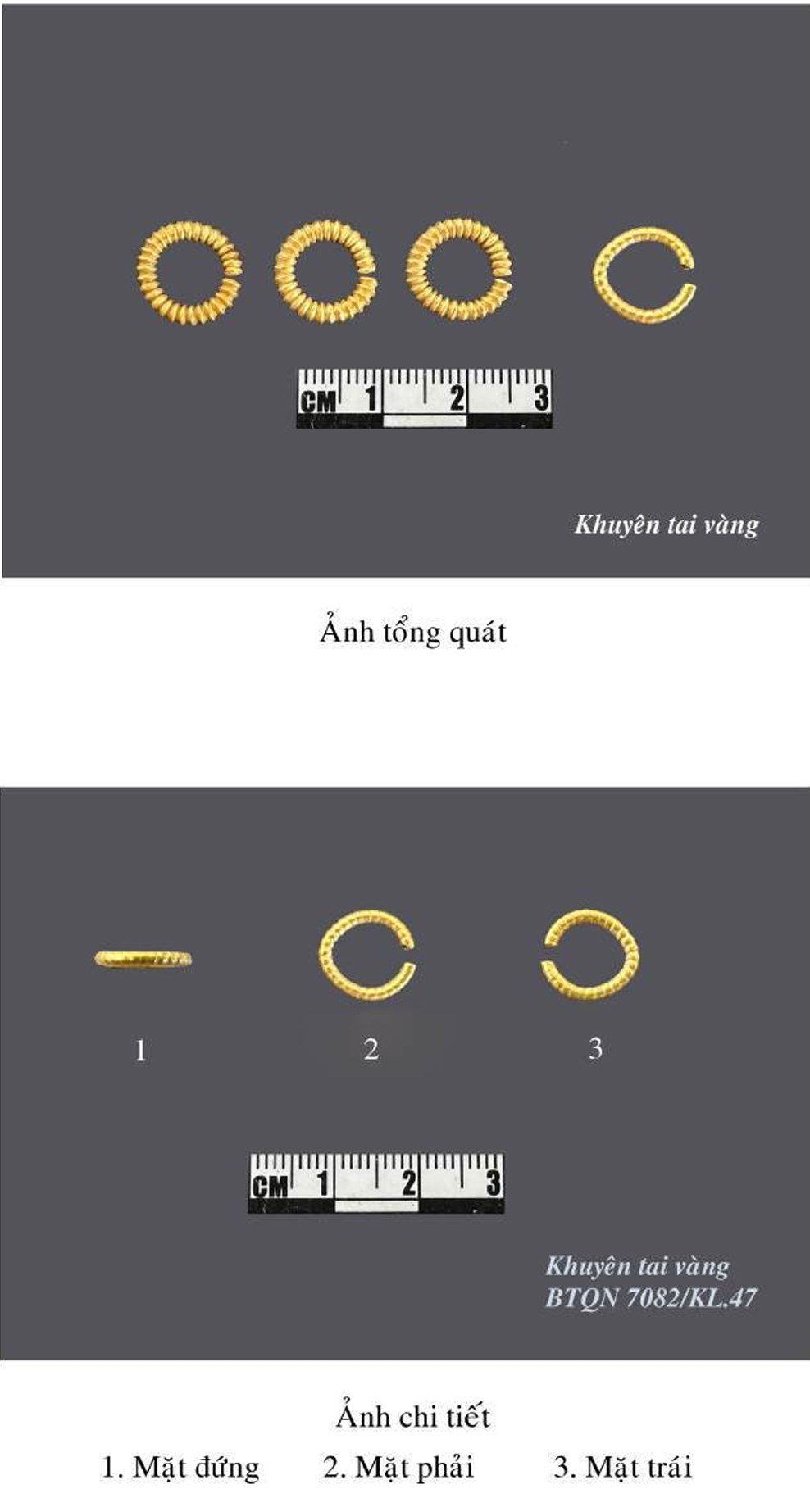
Therefore, German and Vietnamese archaeologists participating in the excavation and research believe that these four earrings were crafted using two different techniques, made by different craftsmen and belonging to two different crafting traditions. The gold or gold-plated beads can be made by the method of stamping the outer mold, punching holes inside to create hollow beads, etc.
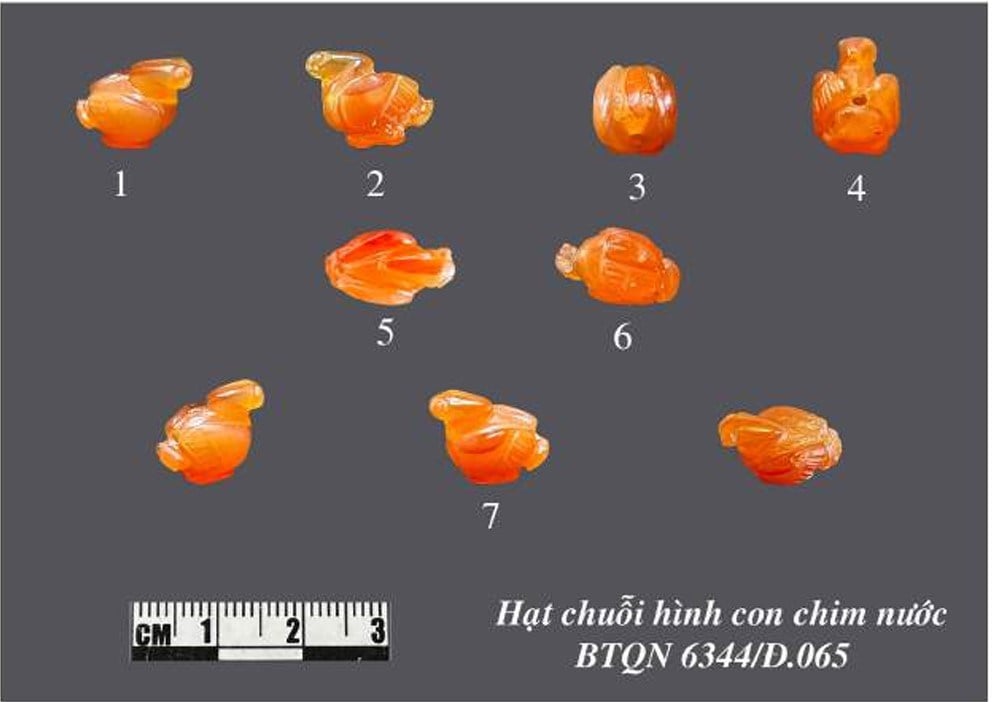
Second, the animal-shaped agate artifacts dated from the 3rd century BC to the mid-1st century AD, including 2 intact artifacts: agate beads/earrings carved in the shape of a small water bird and a tiger carved with holes drilled to wear along the body.
The artifacts are shaped from hard stone, small in size, detailed, clearly showing the features of each body part on all sides including the underside of the animal.
The unique feature of these two artifacts lies in the sophisticated manufacturing technique, complex process, skillfully and precisely executed, considered as evidence for research on regional and international exchange of Sa Huynh culture in the Thu Bon river basin, contributing to demonstrating the important role of Sa Huynh residents in the long-distance trade network at that time.
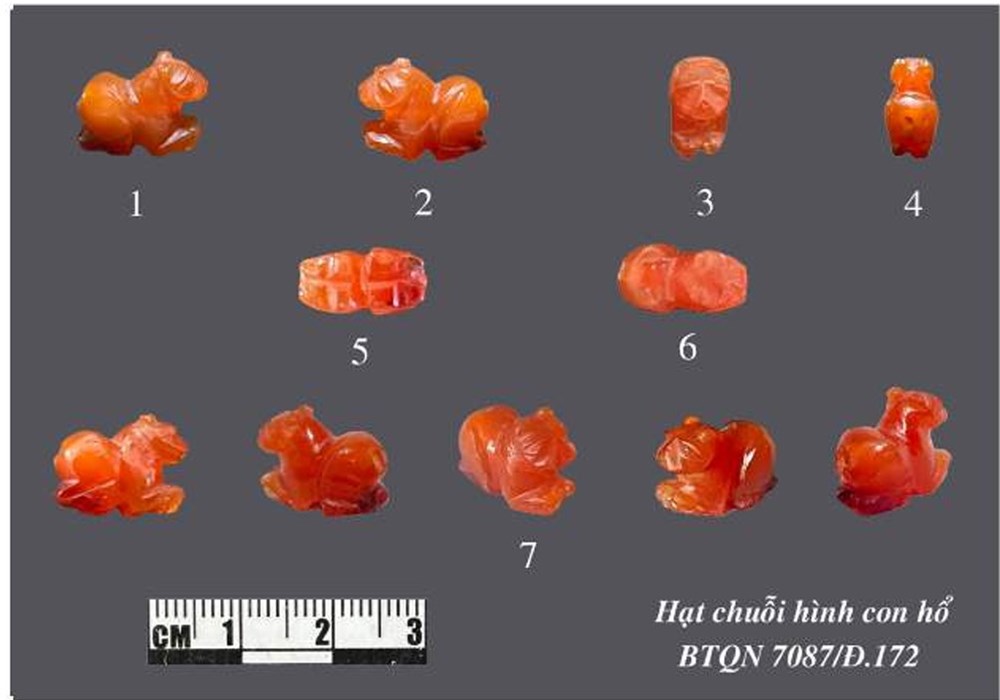
To promote the value of these precious artifacts, in the coming time, Quang Nam Museum will deploy digital technology applications to protect and promote the value of treasures such as 3D scanning, digitizing artifacts, organizing live and online exhibitions, propaganda, promotion, and further promoting the value of these artifacts on mass media and social networks.
Source: https://baovanhoa.vn/van-hoa/de-nghi-cong-nhan-bao-vat-quoc-gia-hien-vat-bo-trang-suc-van-hoa-sa-huynh-108834.html



![[Photo] Ho Chi Minh City is brilliant with flags and flowers on the eve of the 1st Party Congress, term 2025-2030](https://vphoto.vietnam.vn/thumb/1200x675/vietnam/resource/IMAGE/2025/10/10/1760102923219_ndo_br_thiet-ke-chua-co-ten-43-png.webp)
![[Photo] "Exposing letters" in the flood center of Lang Son](https://vphoto.vietnam.vn/thumb/1200x675/vietnam/resource/IMAGE/2025/10/10/1760080117518_ndo_br_z7101324112737-07cd4d1c01801a8ccf4ae0cbaf31c4a3-507-jpg.webp)

![[Photo] Unique Phu Gia horse hat weaving craft](https://vphoto.vietnam.vn/thumb/1200x675/vietnam/resource/IMAGE/2025/10/10/1760084018320_ndo_br_01-jpg.webp)



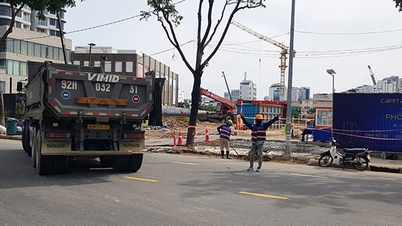



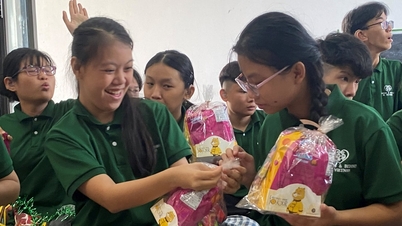





















































































Comment (0)